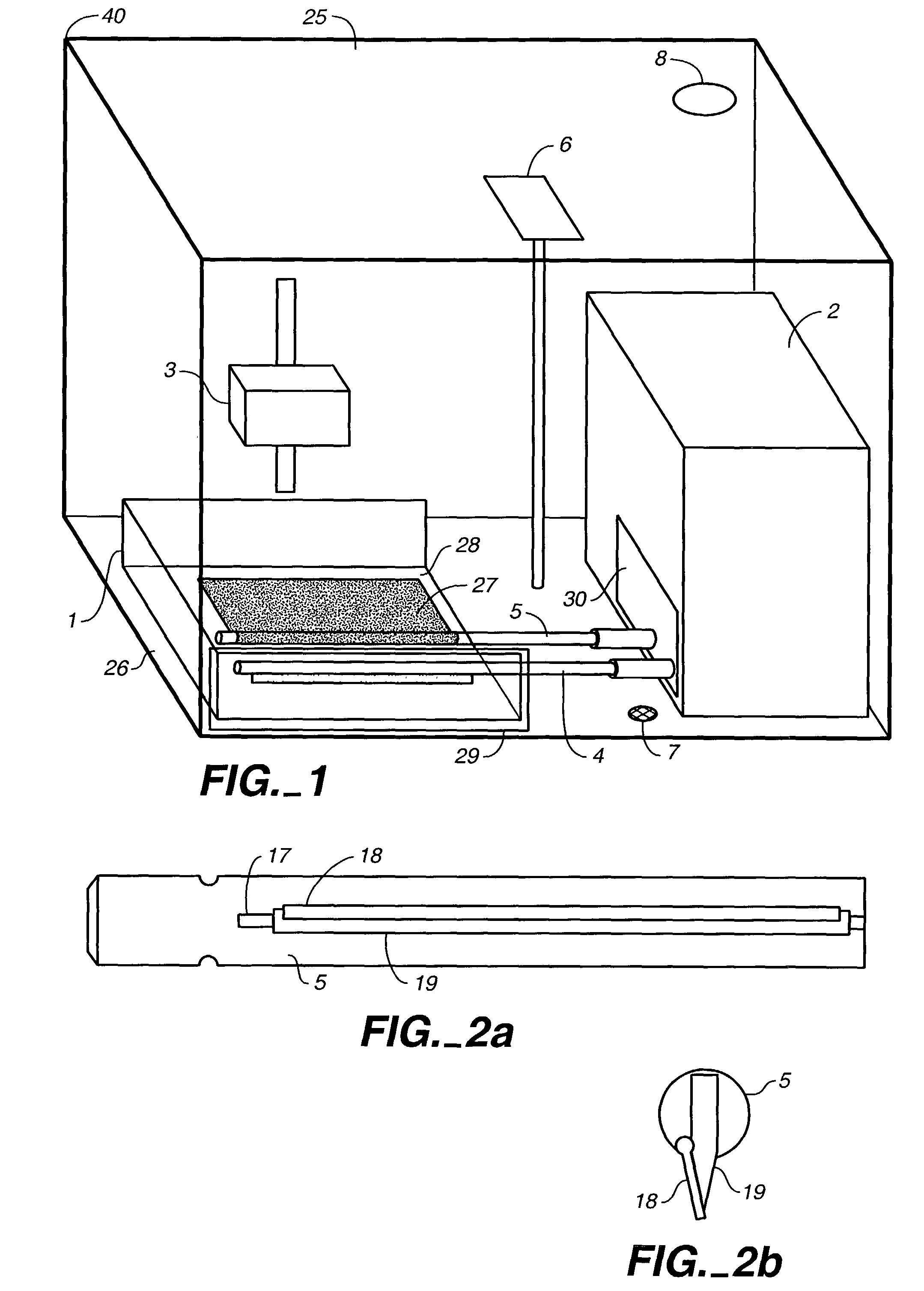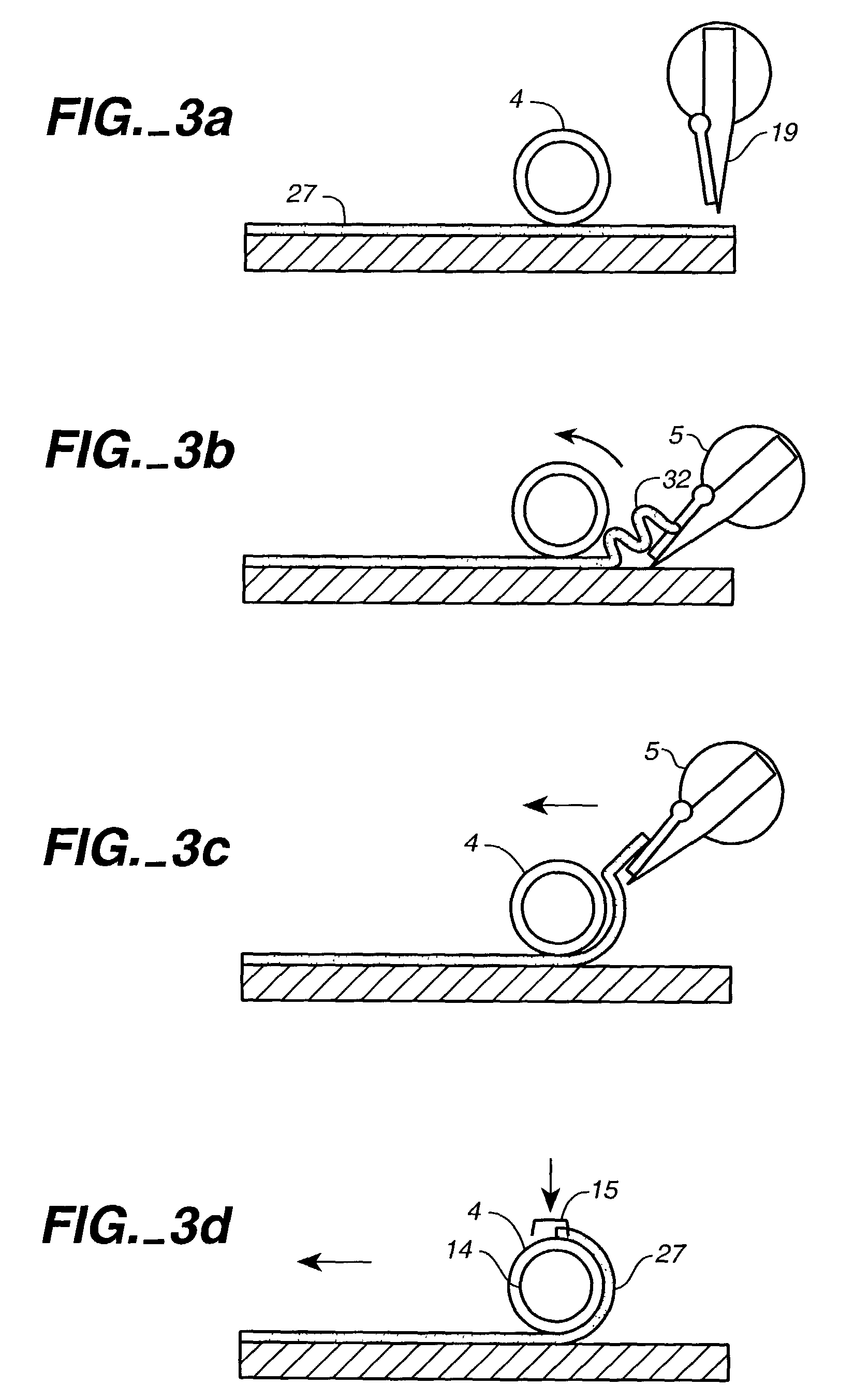Tissue engineered blood vessels and apparatus for their manufacture
- Summary
- Abstract
- Description
- Claims
- Application Information
AI Technical Summary
Benefits of technology
Problems solved by technology
Method used
Image
Examples
Embodiment Construction
[0022]The first step in the process of making the TEBV of this invention is to prepare a sheet of fibroblasts. This sheet includes fibroblasts taken from the patient's own body (an autologous graft) or from donor tissue (an allograft). Allograft tissues have the advantage of being able to treat many patients from a single donor source. However the cells used in allograft tissue must be treated to eliminate physiological foreign body responses. This treatment typically includes removing surface antigens such that host antibodies cannot label the cells for destruction. This can be accomplished chemically or enzymatically.
[0023]In a preferred embodiment of the invention, autologous cells are harvested from the patient's own body to eliminate the risks of disease transmission and tissue rejection. Nearly all tissue biopsies contain some endothelial cells and some fibroblasts. Therefore, almost any biopsy procedure or tissue harvest will provide a suitable starting point for both. Skin o...
PUM
 Login to View More
Login to View More Abstract
Description
Claims
Application Information
 Login to View More
Login to View More - R&D
- Intellectual Property
- Life Sciences
- Materials
- Tech Scout
- Unparalleled Data Quality
- Higher Quality Content
- 60% Fewer Hallucinations
Browse by: Latest US Patents, China's latest patents, Technical Efficacy Thesaurus, Application Domain, Technology Topic, Popular Technical Reports.
© 2025 PatSnap. All rights reserved.Legal|Privacy policy|Modern Slavery Act Transparency Statement|Sitemap|About US| Contact US: help@patsnap.com



